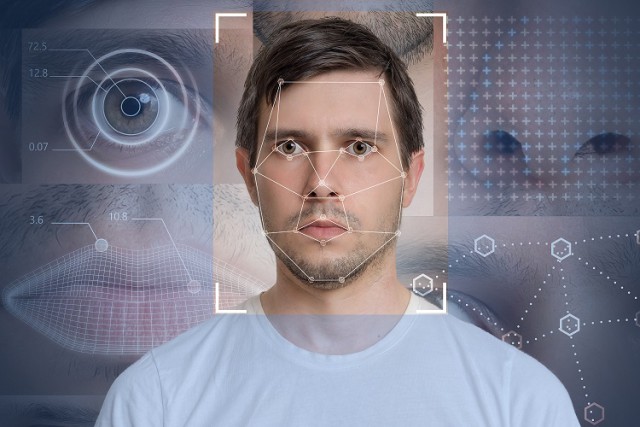The Technology Empowering a New Class of Healthier, Smarter Buildings

How can building owners develop safer, healthier and smarter building strategies, providing insight into just some of the solutions that can empower them to self-diagnose and identify potential shortcomings and to implement the most appropriate technologies to help mitigate risks both now and in the future? James Allardyce of Chubb examines the options.
The impact of the COVID-19 pandemic to the safety and security of commercial buildings
The impact of the Covid-19 pandemic to the safety and security of commercial buildings
Prior to Covid-19 employee proximity was often seen as a positive. Many offices encouraged open plan layouts with dedicated shared spaces and break out rooms to support collaborative working and idea sharing.
In 2020 this thinking sadly had to change; new guidelines for safe working practices, gaps and pitfalls in many current setups became paramount. People are inherently helpful to one another, especially when it comes to their co-workers. For example, prior to Covid-19 if you arrived at your office and discovered you had left your access pass at home, a friendly coworker might open the door for you and let you in. However, to adhere to regulatory compliance policy, building owners are required to understand exactly who is in the building, why they are there and for how long.
Employee confidence has never been of such importance as it is now. Not only do employees need to feel secure in their place of work, they also need to feel reassured that their health is protected.
Key Challenges post Covid-19
Covid-19 required a complete overhaul of working practices, encouraging employees from numerous industries to leave their offices and work from home. The biggest challenge facing building owners currently is winning over the hearts and minds of these individuals as they return to the workplace.
The environment employees return to not only has to support their physical wellbeing but also their mental wellbeing. This is a change in thinking and therefore presents a significant challenge.
Physical interaction in, and with, buildings is natural, but when you think about simple tasks such as opening doors, pressing lift buttons, touching desks, operating coffee machines etc. at a mass scale, it becomes more problematic.
Building owners have to consider flexible working conditions such as agile and remote working. In the short term, software including Microsoft Teams and Zoom has been a lifeline, allowing socially distanced face-to-face interaction. But these technologies can never fully replace face-to-face contact with colleagues and clients. It serves a purpose, but long-term solutions are required.
How did buildings adapt?
The reaction was very quick at a time when no one really knew what was coming next, and the goal posts were moving fast. We worked with businesses to install two initial reactionary measures.
The first was body temperature measuring at building entry points using thermal cameras. Our non-invasive, contactless or hand-held thermal camera solutions were ideal for deployment at controlled entrances to areas and facilities where initial skin temperature scanning is needed for staff and visitors.
The second was occupancy control. Our cloud-based, smart live occupancy solution offers unmanned control over occupancy levels. For many businesses, the need for optimising occupancy had never been greater. Limits on the number of people that can gather in enclosed spaces, such as supermarkets, shops, restaurants and other public facilities has equated to a reduction in footfall and subsequently a reduction in potential sales. We created a fully automated, live occupancy system that allows businesses to maximise footfall while adhering to social distancing and hygiene guidelines.
Other solutions
Social distancing has proved to be a challenge for many businesses across the globe. Shared spaces in offices or buildings can be susceptible to virus transmission if proper social distancing is not practiced. Social distancing monitoring is available through our integrated access control system.
Our smart system works by using Bluetooth. Each digital badge continuously monitors close contacts across the workplace with other badge holders. In the event a team member or visitor is identified as infected, it quickly delivers Covid-19 exposure reporting. We understand that employee data is sensitive, even during a pandemic. That is why we are able to provide complete anonymity while effectively managing operational risks.

Touchless access control will be crucial in the future to maintain optimum cleanliness. Bluetooth readers can be used to open doors and facial recognition can allow entry with automatically opening doors.
Touch driven visitor passes may become a thing of the past and individuals will use mobile phones to check in to sites. We have already seen examples of this in practice during the pandemic with track and trace QR codes in use in restaurants and public spaces.
Analytic cameras are able to be programmed with ‘rules’ so that they can undertake a specific action. For example, controlling crowds, giving organisers notifications when the level of people exceeds a set number congregated in one area.
This technology could enhance safety in an effective way. To find a lost child who was wearing a red jacket, for example, in a crowded space. Cameras could be set to search for all individuals in a set timeframe wearing a red jacket. Previously, it would have been a long manual process of scouring the footage and working with security guards to build a picture.
Putting it into practice
We are currently working on a unification project to integrate standalone CCTV access control and ANPR systems into one central function. This brings huge operational benefits. A smart and interactive system in one location saves both time and money for businesses.
Heat mapping is an area we have seen huge growth in. When you can accurately understand who has entered the building and where they have been, you can direct resource the correct areas. This saves greatly on operational costs.
We have been working with several UK universities with buildings that are too complex to manage traditionally and make cost control difficult. The universities spend around £200k each a year on access control passes for lecturers, visitors and students. We are now integrating a brand new digital mobile credentials app that allows access to the building. Just one year’s worth of cards covered the infrastructure upgrade for the entire estate. The benefits of the Bluetooth solution are plentiful; it limits the connection between the card issuer and the user, reduces the use of plastic, and tightens the core access control management. This leads to improved security and confidence for building management.
Adapting to the new normal
Mobile credentials are becoming increasingly recognised as key for businesses. User-controlled building access that considers agile working is important. Integrations can also be made with visitor management systems and HR processes. If you can track who is coming into a building and how they are using the space, you will have data that enables you to make smart real estate decisions. Declarations can also be done virtually, eliminating the need for pen and paper.
Despite lockdown restrictions easing, we foresee capacity management staying in place for the foreseeable future. This remains a driver for us as a solution provider and the businesses we cater to. We have seen a shift in thinking from what makes the tenant choose a building to what makes a building user want to be there. The power has really moved to the users.
Emerging from the pandemic
By understanding how your building is used and making decisions based on real data, you can be effective in your space utilisation. This enables owners to make an informed decision about real estate space. It could lead owners to sub-let space or downsize to save money.
James Allardyce is Director of Solution Sales at Chubb Fire & Security








